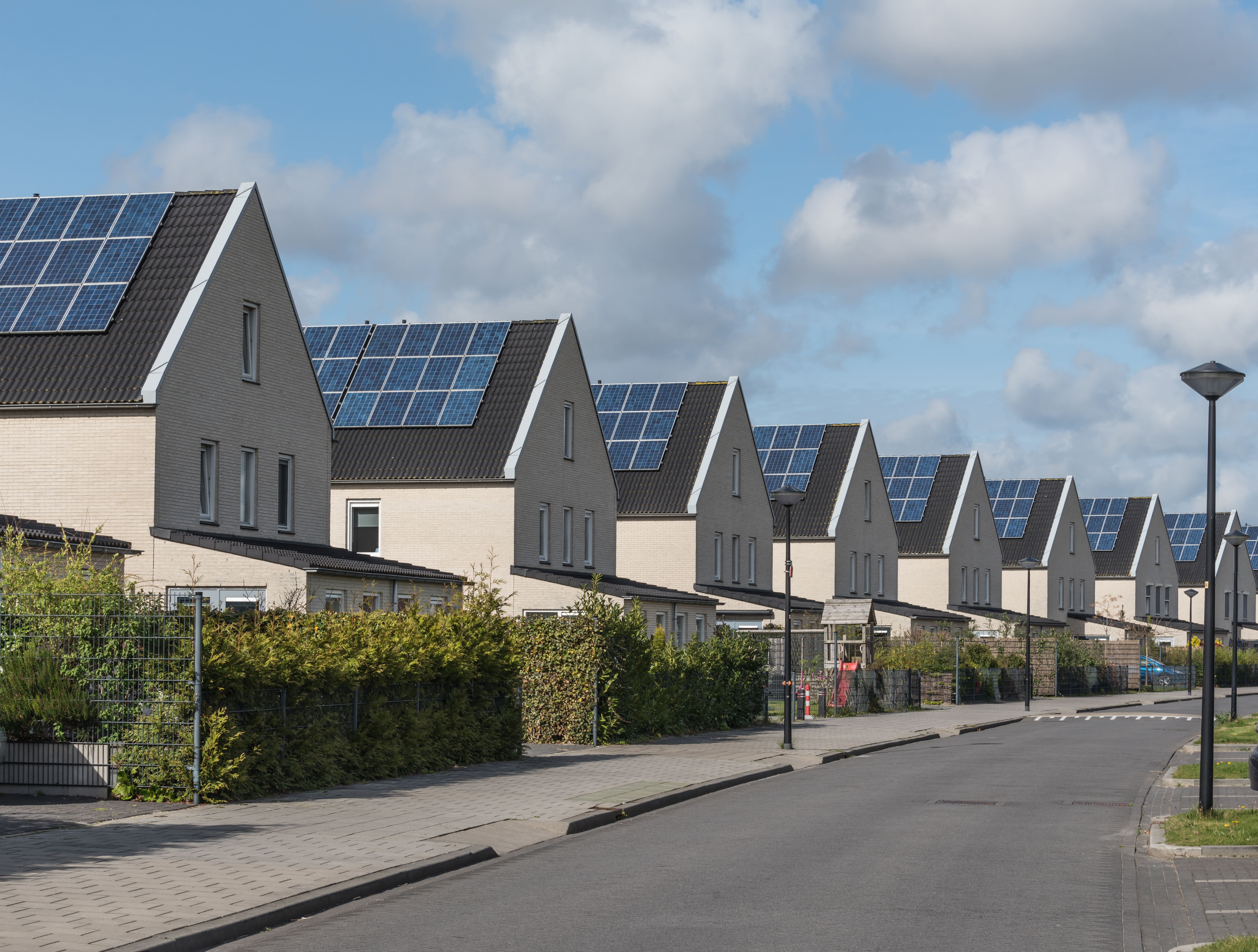
How does the sector tackle a growing housing shortage and expand infrastructure services while also achieving emissions reductions in line with the government targets from the built environment by 2030? Meeting this challenge will require a rapid decrease in the use of carbon-intensive building materials in the next few years and an increase in low-carbon alternatives. Building materials account for roughly 19% of the UK’s total greenhouse gas emissions.
The Future Homes Standard was launched in the spring statement earlier this year and is set to be implemented by 2025. In short, it means that all buildings must be net zero carbon in operation before 2050, with new buildings meeting this standard by 2030.
The BEIS Strategy Committee welcomed the announcement of a Future Homes Standard, however, the committee went on record to issue a warning that ‘any attempts by housebuilders to water down the standard should be blocked by the government. The only barrier precluding housebuilders developing to higher standards before 2025 is a preoccupation with profit margins and shareholder returns. Despite receiving billions in taxpayer funds, most housebuilders will only raise the energy standards of their stock if forced to do so. Progressive housebuilders who want to go further are being held back by the laggards who actively lobby the government to boost their profits, rather than help meet carbon reduction obligations.
The UKGBC urged the government to set out a clear trajectory, so that all new buildings achieve net zero carbon (both regulated and unregulated energy and in-use performance) by 2030. From 2025 at the latest, all new buildings should have low carbon heating, deliver ultra-high levels of energy efficiency consistent with a space heat demand of 15-20 kWh/m2/yr – as recommended by the Committee on Climate Change, in order to help deliver on the national net zero target.
Whilst a focus on new buildings is welcome, the challenge of how to retrofit existing buildings remains a vital challenge to address.
Is the construction industry’s beleaguered supply chain in a fit state to deliver the government’s revived green building dream?
Will Kirkman, Managing Director of Ecomerchant, thinks that the supply chain offers a clear way to deliver on the government’s ambitions and doesn’t share this pessimistic view. He states, “There are good suppliers out there with established sustainable credentials and proven low impact energy efficient products to help architects, designers and builders not only meet but exceed the proposed carbon targets.” He notes that, “stricter carbon and energy efficiency targets have been mandatory in many of these suppliers’ home markets for years, so they have the experience, in situ evidence and products ready to go straight off the shelf.” Kirkman highlights two manufacturers of energy saving products that have taken sustainability and carbon reduction to the heart of their company ethos, companies who are well-known to passive constructors and the growing number of architects designing now to meet more stringent carbon targets.
Steico is a German/Polish manufacturer of timber building products – I joists, LVL, and wood fibre insulation. They manufacture under strict environmental procedures and certifications from sourcing through manufacture to products. Timber is a unique material in that for each 1 m3 used, up to one tonne of CO2 is bound within the product. In wood fibre insulating materials this CO2 remains locked into the product for the entire lifetime of the product. It has been calculated using Steico insulating material used to completely insulate an average single family house, locks up as much CO2 as a small car emits in the course of travelling 30,000 miles.
In 2018, the Steico Group processed around 934,875 m3 of fresh wood from certified sustainable forestry, resulting in almost a million tons of CO2 stored and removed from the atmosphere in one year.
Two of Steico’s largest production sites in Poland are powered by biomass and the wood used in annual production stores more than twice as much CO2 than is released during manufacture. Steico also operate a closed water cycle. Steico products are FSC and PEFC certified have EPD’s and are Passive Component certified.
Unilin is a Belgian manufacturer of building panels which operates 100% on a circular basis not one tree is purposely felled to make any of their products, the bulk of the raw materials they use are classed as postconsumer or urban wood. This is recycled wood from pallets, packaging, old furniture and reclaimed timber and only sourced from locations within a 400 km radius of the production sites. They also use thinned wood from sustainable verge and forest management, and pre-consumer wood supplied by the timber industry.
Unilin Panel products are 100 per cent circular which helps save an average of 5,000 trees a day and reduce CO2 emissions by some 1.2 million tonnes a year. Plus, it powers its plants with onsite biomass using ‘end-of-life’-wood only.
There is no need to wait to get on with this
Will Kirkman concludes, “specifying, designing and building to the proposed 2030 low carbon targets is already being delivered. Innovative constructors, such as Passivhaus Homes Ltd, are building affordable housing to this level of performance now, using natural materials, including ones from Steico and Unilin. These homes have low embodied energy and sequester carbon within the structure for the life time of the building, so we do not need to wait to get on with this.”
More at: www.ecomerchant.co.uk www.steico.co.uk www.unilinpanels.com www.phhomes.co.uk
